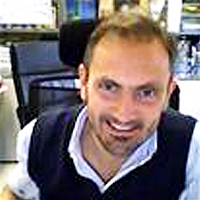Profile of vitamin D receptor polymorphism Bsm I and FokI in end stage renal disease Egyptian patients on maintenance hemodialysis
Published on: 30th August, 2017
OCLC Number/Unique Identifier: 7317595147
Objective: In end stage renal disease, the synthesis of vitamin D is disturbed.Hyperparathyroidism is one of the key factors in the pathogenesis of many of the complications of dialysis mainly bone and cardiovascular complications.Aim:This study aimed at assessing vitamin D receptor gene polymorphisms BsmIand FokI in Egyptian patients with end stage renal disease on maintenance haemodialysis and the assosciation of these polymorphisms with cardiovascular complications and hyperparathyroidism among these patients.
Methods: One hundred subjects, recruited from Medical Research Institute, from March to July 2014, divided into two main groups; the control group which included thirty apparently healthy subjects and the patients group which included seventy patients with end stage renal disease on maintenance haemodialysis with median 4 years. To all studied subjects, detailed history was taken, thorough physical examination, carotid intima media thickness, presence of plaques and ECG ischemic changes. Laboratory investigations included serum levels of: glucouse, urea, creatinine, uric acid, albumin, total cholesterol, low and high density lipoproteins, calcium, phosphorus, and CRP as well as plasma PTH level. For molecular studies, the detection of BsmI and FokI polymorphisms using polymerase chain reaction and restriction fragment length polymorphism (PCR / RFLP) technique.
Results: 1.No statistically significant difference could be detected in both BsmI and FokI gene polymorphisms between the hemodialysis patients and the controls, suggesting that the development of ESRD had no relation with either VDR BsmI or FokI gene polymorphisms.2.No statistically significant difference were found in these polymorphisms between the hemodialysis patients with or without cardiovascular complications or between patients with PTH level less or more than 300 pg/ml. These results suggest that the development of cardiovascular complications and secondary hyperparathyroidism among Egyptian patients on maintenance haemodialysis cannot be attributed to these two gene polymorphisms.
Conclusion: No association could be found between the variant alleles of BsmI and FokI gene polymorphisms and the development of ESRD, cardiovascular complications and secondary hyperparathyroidism among the studied samples of Egyptian patients on maintenance haemodialysis.
A study on pacemaker pocket infection
Published on: 25th March, 2020
OCLC Number/Unique Identifier: 8576354340
Objective: Cardiac implantable electronic device (CIED) infections now constitute ∼ 10% of all endocarditis cases. The incidence of CIED infection is usually < 2%. Our objective was to study pacemaker pocket infection rate and different risk factors in our institution.
Methods: This observational study was conducted over a period of five years from January 2011 to December 2016 and it included 1096 patients. Common risk factors like patients with diabetes, repeat procedure, chronic renal failure, chronic obstructive airway disease, immunosuppressive agents were studied in our patients.
Results: Our study consisted of 1096 patients. Pacemaker pocket infection occurred in sixteen patients (1.5%). Chronic renal failure patients were one hundred thirty in our study (11.86%). There were three hundred fifty six diabetic patients (32.48%). Repeat procedure was done in ninety five patients (8.6%).
Results: Our study consisted of 1096 patients. Pacemaker pocket infection occurred in sixteen patients (1.5%). Chronic renal failure patients were one hundred thirty in our study (11.86%). There were three hundred fifty six diabetic patients (32.48%). Repeat procedure was done in ninety five patients (8.6%)
Eighty six patients were suffering from chronic obstructive airway (7.8%). Patients on immunosuppressive therapy were fourteen in our study (1.2%).
Conclusion: Pacemaker pocket infections is a dreaded complication after pacemaker implantation. During implantation, there is a risk of device contamination with the patient’s own skin flora and it can be prevented by ideal surgical asepsis technique, pre and perioperative use of antibiotics.
The inflammatory profile of chronic kidney disease patients
Published on: 20th December, 2021
OCLC Number/Unique Identifier: 9396216755
Background: Chronic kidney disease is a worldwide public health issue which is associated with an increased risk of end-stage renal failure and cardiovascular disease. Systemic inflammation exists during chronic renal failure. Recent researches have highlighted the pivotal role of inflammation between renal and cardiovascular disease. The aim of our study is to determine the inflammatory profile of the patient suffering from chronic kidney disease and the influence of hemodialysis on this profile.Methods: We carried out a cross sectional study on 93 patients in the Nephrology Department at Hedi Chaker University Hospital, Sfax, South of Tunisia. Among those patients, 72 patients underwent hemodialysis and 21 patients had chronic kidney disease at stage 3. Clinical data and antecedents were collected. Biological samples were taken after informing the patients and taking their consent. Biological data consisted in lipid profile, albumin rate, hemoglobin rate, uric acid concentration and the usual markers of inflammation noting sedimentation rate, C - reactive protein and orosomucoid.Results: Hemodialysis group of the 72 patients had mean hemodialysis vintage of 54.6 ± 43 months. The inflammatory profile was worse in hemodialysis patients compared to chronic kidney disease patients. Both sedimentation rate, C - reactive protein and orosomucoid were higher in hemodialysis group than in chronic kidney disease group with 71 ± 35.3 mm vs. 42.1 ± 15.5 mm (p < 0.05); 14.6 ± 28.7 mg/l vs. 6.7 ± 8 mg/l (p = 0.02); 1.3 ± 0.7g/l vs. 0.9 ± 0.4 g/l (p = 0.01), respectively.Conclusion: Inflammation increases in dialysis patient. It deserves the nephrologist’s consideration in order to minimize its harmful effects. The monitoring of inflammation markers must be integrated into the nephrologist’s medical practice.
Status of hemodialysis patients using complementary and alternative medicine practices during the COVID-19 pandemic
Published on: 31st August, 2022
The use of complementary and alternative medicine (CAM) applications increased by 39.3% of individuals with chronic diseases during the pandemic process in Turkey. For this reason, this descriptive study was conducted to determine the use of integrative and integrated medicine practices in hemodialysis patients during the COVID-19 pandemic. The population of the study consisted of individuals who were treated in a hemodialysis unit in the city center (n = 235). It was planned to include whole of the population by using the whole number method, but patients, who did not agree to participate in the study and did not meet the inclusion criteria of the study, were excluded from the sample and the study was conducted with 160 patients between 1 June and 1 September 2021. As a data collection tool, a questionnaire consisting of 30 questions including socio-demographic and disease characteristics of the patients was prepared by the researcher upon review of related literature. Considering the distribution of phytotherapy method (herbal treatment) usage frequency of integrative and integrated medicine applications of individuals before the COVID-19 pandemic and during the COVID-19 pandemic period, the most vitamins (21.8%), prebiotics (12.5%), and honey (%) 10.6), their use was found to be high. During the COVID-19 pandemic, the use of massage (40%), breathing exercises (30.0%) and spiritual therapy (28.7%) applications increased. As a result, it is seen that integrative and integrated applications are considered in the process of dealing with hemodialysis patients. Physicians need to be aware of and ask patients about their use of integrated and integrated health practices.
Renal Lymphangiectasia: A Diagnostic and Therapeutic Challenge
Published on: 10th May, 2024
Renal lymphangiectasia, a rare lymphatic disorder, manifests as cystic infiltration in the perirenal and para-pyelic space due to lymphatic drainage defects. Diagnosis hinges on imaging modalities like ultrasound, CT, and MRI. However, lack of awareness can lead to confusion with other renal cystic pathologies. Here, we present a case of renal lymphangiectasia in a child, detailing diagnostic and therapeutic strategies. The patient, a 2-year-old and 2-month-old girl from a consanguineous marriage, presented with persistent abdominal distension. Clinical examination revealed growth retardation and normal blood pressure but abdominal distension with dullness. Lab investigations indicated acute renal failure with non-nephrotic proteinuria. Radiologically, renal lymphangiectasia was confirmed by ultrasound showing microcysts and perirenal cystic lesions with ascites, corroborated by MRI and CT scans. Treatment involved nephroprotective therapy and diuretics for ascites. Surgical intervention was necessitated due to cyst size and compressive nature, involving iterative punctures, marsupialization, and percutaneous drainage. Postoperatively, recurrent ascites temporarily worsened renal function but returned to baseline afterward. renal lymphangiectasia necessitates careful management due to its potential to progress to chronic renal failure. The prognosis depends on factors like initial proteinuria severity, treatment response, and complication management. Personalized approaches are pivotal in its diagnosis and management.
Pseudocalcinosis Tumorale (Teutschlander Disease) in Chronic Hemodialysis Patients
Published on: 24th October, 2024
Pseudotumoral calcinosis (CPT) is a condition characterized by the deposition of calcium phosphate crystals in the periarticular tissues, forming large calcified masses. Although the pathophysiology of CPT is not fully understood, an increase in the calcium-phosphate product beyond the precipitation threshold and severe hyperparathyroidism appear to play a significant role. Treatment remains controversial, with surgical excision often recommended. We report a case of CPT in a 74-year-old diabetic patient undergoing chronic hemodialysis who experienced progressively worsening pain in the left hip for six months, along with mobility difficulties. A CT scan revealed a calcified mass on the posterior thigh, likely explaining the electric shock-like pain, as well as compression of the superficial femoral artery causing decubitus pain resembling critical limb ischemia. The biological assessment showed elevated calcium-phosphate levels and hyperparathyroidism. Surgical excision is not indicated due to the mass’s proximity to vascular and nerve structures. This case highlights the diagnostic and therapeutic challenges of CPT, emphasizing the need for iterative angioplasties, considering that this condition is rare in chronic hemodialysis patients with calcified periarticular masses.
















